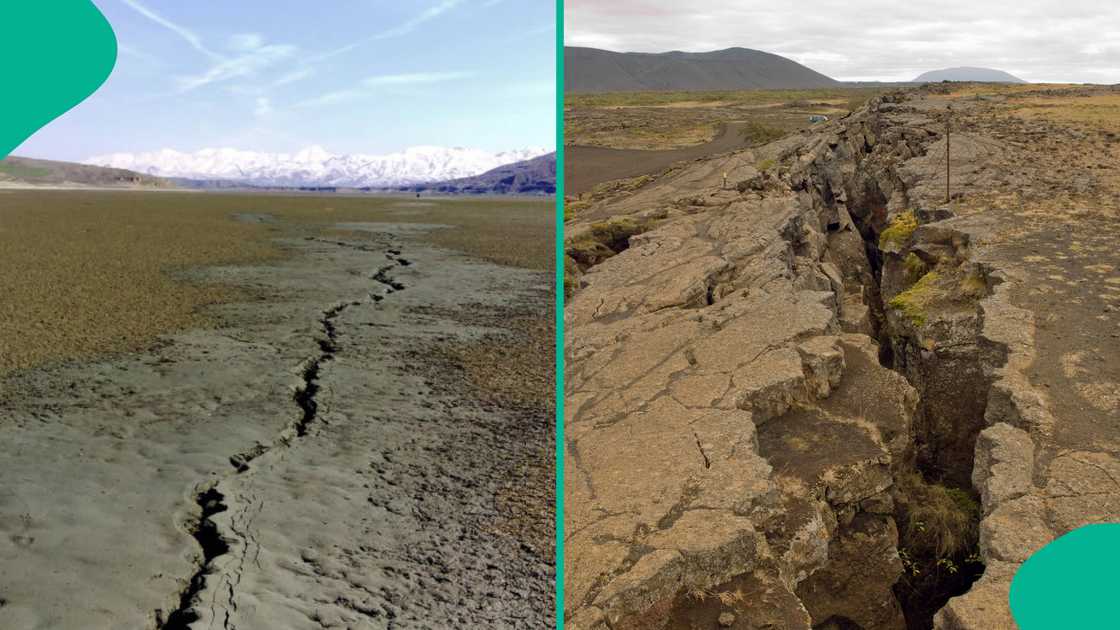Scientists Predict the Entire Africa May Crack and Split Into Two, Mentions When It Will Happen
- A monumental geological shift is quietly reshaping Africa, as scientists uncover evidence that the continent is slowly splitting in two
- New research points to pulses of molten rock deep beneath Ethiopia as the driving force behind the formation of a future ocean
- Over millions of years, this rift could divide Africa into separate landmasses, redrawing the map of the continent entirely
What once sounded like science fiction is steadily becoming a geological reality.
A vast crack is slowly tearing Africa apart—literally. According to a newly published study from Swansea University, scientists have found compelling evidence that rhythmic pulses of molten rock beneath Ethiopia are gradually splitting the continent in two, forming what could eventually become a new ocean.

Source: Getty Images
Tectonic shifts signal the birth of a new ocean
The study’s lead author, Dr Emma Watts, explained that the forces driving this dramatic transformation originate deep within the Earth’s mantle.
“The split will eventually go all the way down Africa,” she said. “It has already begun and is happening now but at a slow rate – 5-16 mm per year – in the north of the rift.”
This slow-moving fracture runs from north-east Africa down towards the south, threatening to cleave the continent apart over the course of five to ten million years.
The separation could transform the geography of East Africa, giving rise to a new ocean that would redefine continental boundaries.
Gulf of Aden may be the starting point of continental rift
According to Dr Watts, the Gulf of Aden may serve as the initial tear in this continental divide, potentially spreading southwards through major East African lakes such as Lake Malawi and Lake Turkana.
Once complete, this split would create two distinct landmasses. The larger western portion would include countries like Egypt, Algeria, Nigeria, Ghana, and Namibia, while the smaller eastern segment would comprise Somalia, Kenya, Tanzania, Mozambique, and much of Ethiopia.
“The smaller part that breaks away towards the east will be approximately 1 million square miles in area and the remaining larger landmass will be just over 10 million square miles,” Dr Watts revealed.
Afar region at the centre of Earth’s tectonic upheaval
The Swansea research team collected over 130 volcanic rock samples from Ethiopia’s Afar region, where three tectonic plates—the Main Ethiopian Rift, Red Sea Rift, and Gulf of Aden Rift—converge and pull apart.
Their findings revealed that the Earth’s mantle beneath this zone is not uniform, but pulses with partially molten rock driven upwards by the divergent plate movement.
“We found that the mantle beneath Afar is not uniform or stationary – it pulses,” Dr Watts explained. “These ascending pulses of partially molten mantle are channelled by the rifting plates above.”
This upwelling of magma stretches and weakens the crust over millions of years, thinning it like softened clay until rupture occurs. When that breaking point is reached, a new ocean basin is likely to emerge, forming where the plates separate and magma solidifies.
Implications for future earthquakes and volcanism
Geologists have long speculated about the existence of such upwellings, but this study provides one of the clearest insights yet into how they function during continental breakup.
The research suggests that pulse behaviour varies depending on how quickly the plates move and how thick they are, with the Afar region now heavily covered in volcanic rock as a result.
“This has profound implications for how we interpret surface volcanism, earthquake activity, and the process of continental breakup,” Dr Watts concluded.
As Africa continues its quiet drift towards division, what emerges in its wake may be one of Earth’s youngest oceans—formed not in a sudden cataclysm, but by the patient, powerful rhythm of the planet’s molten heart.

Source: Getty Images
Scientists explain powerful superstorm that can hit Earth
Legit.ng earlier reported that experts have raised concerns over the possibility of a solar superstorm strong enough to cause an "internet apocalypse," disable satellites, and cripple essential infrastructure.
Such an event, known as a Miyake event, last occurred over a thousand years ago, long before the advent of electricity.
Source: Legit.ng





